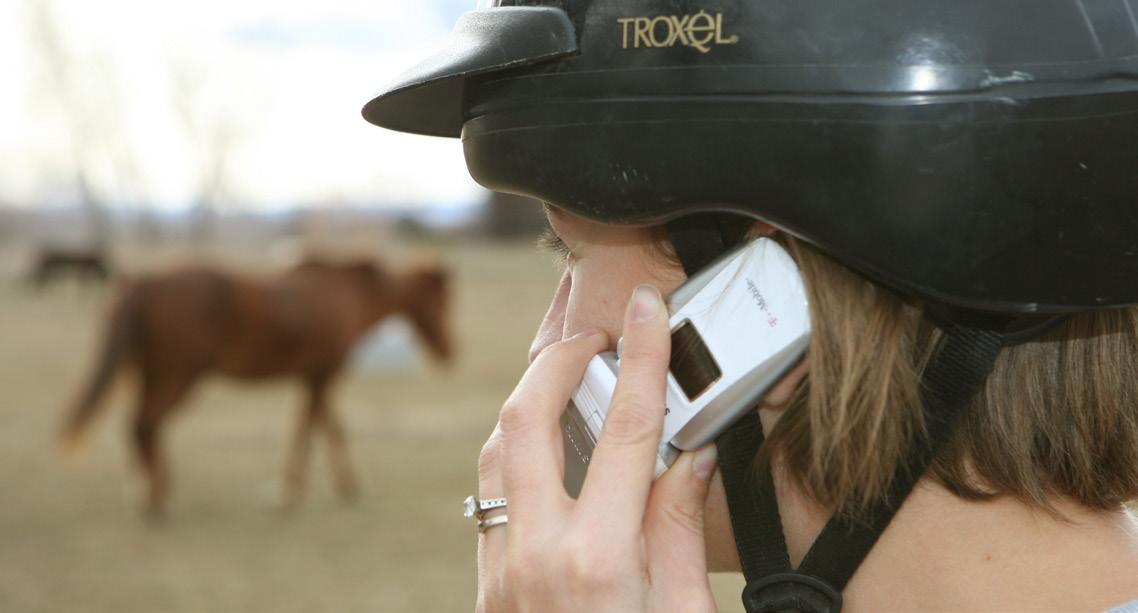
3 minute read
Your Healthy Horse
How to Talk to Your Vet
Be clear and direct. You and your vet must be able to speak directly with one another, ask questions, and get answers.
Communicate clearly with your equine veterinarian to enhance your horse’s health. By Jessica Jahiel, PhD Photos by Heidi Melocco
To optimize your horse’s health, you and your veterinarian need to work together. Good teamwork requires good communication. Here are nine communication tips. 1. Be clear and direct. Good communication requires trust. You and your veterinarian must be able to speak directly to one another, ask questions, and get answers. Your vet should take each of your questions seriously; in turn, you should feel that you can ask for and receive explanations about any terms, products, and/or treatments that you don’t understand.
2. Keep complete records.
Record all details concerning your horse’s history in one computer file or notebook. Record his foaling date; vaccination and farrier records; any illnesses, injuries, and treatments; feed and supplements; typical water consumption; exercise routine; turnout schedule; and normal vital signs. Such accurate information will help your vet to diagnose and treat your horse. >>

Keep complete records. Accurate information will help your vet diagnose and treat your horse.

Make an appointment. Don’t ask your vet to diagnose your horse over the phone.
3. Provide first-aid. Keep a firstaid kit in the barn and another one in your trailer. Ask your vet what items you should keep in your kit. If you aren’t sure how to use the items, ask your vet to show you. 4. Make an appointment. You may believe you know what your horse’s problem is, but you can’t be certain. Don’t ask your vet to make horse, and you have other horses you’d like her to examine, call and schedule an appointment for each. Don’t ask your vet to “work in” the rest of your resident equines.
a diagnosis or suggest a course of treatment via the phone; she really does need to see your horse first. The more information you can provide in your initial phone call to your vet, the better.
5. Make separate appoint
ments. If your vet is seeing one ing a halter. If possible, keep his coat dry, clean his stall, and leave on all available lights for maximum visibility. 7. Be understanding. If your vet is late, avoid thinking, I scheduled this appointment six months ago; she knew she was supposed to be here at 10! Instead, tell yourself that your vet has a lot of clients, and she can’t help being late to regular appointments if someone has an emergency. Today, you’re the client who has to wait; next time, you might be the client with the emergency. 8. Be curious. Don’t be shy about asking questions. If you don’t know what a word means, or you don’t understand exactly what your vet is saying about a condition or a treatment, ask, then listen closely to the explanation. Some vets are better “explainers” than others, but very few vets are both brilliant explainers and mind readers.
Have your horse easily accessible, wearing a halter. Leave on all available lights for maximum visibility.

6. Be ready when your vet ar
rives. Be prepared, whether it’s a routine call scheduled six months in advance or an emergency. Have your horse easily accessible, wear
9. Provide follow-up treat
ment. Know what you should do after your veterinarian leaves; if the directions are complicated, write them down. For example, make sure you know when you’re supposed to give your horse medication, check his temperature, and hand-walk him. If you follow through on your vet’s instructions, you’ll become a vet’s favorite: the compliant client. USR
Jessica Jahiel, PhD, is an internationally recognized clinician and lecturer, and an awardwinning author of books on horses, riding, and training. Her email newsletter is a popular worldwide resource.









